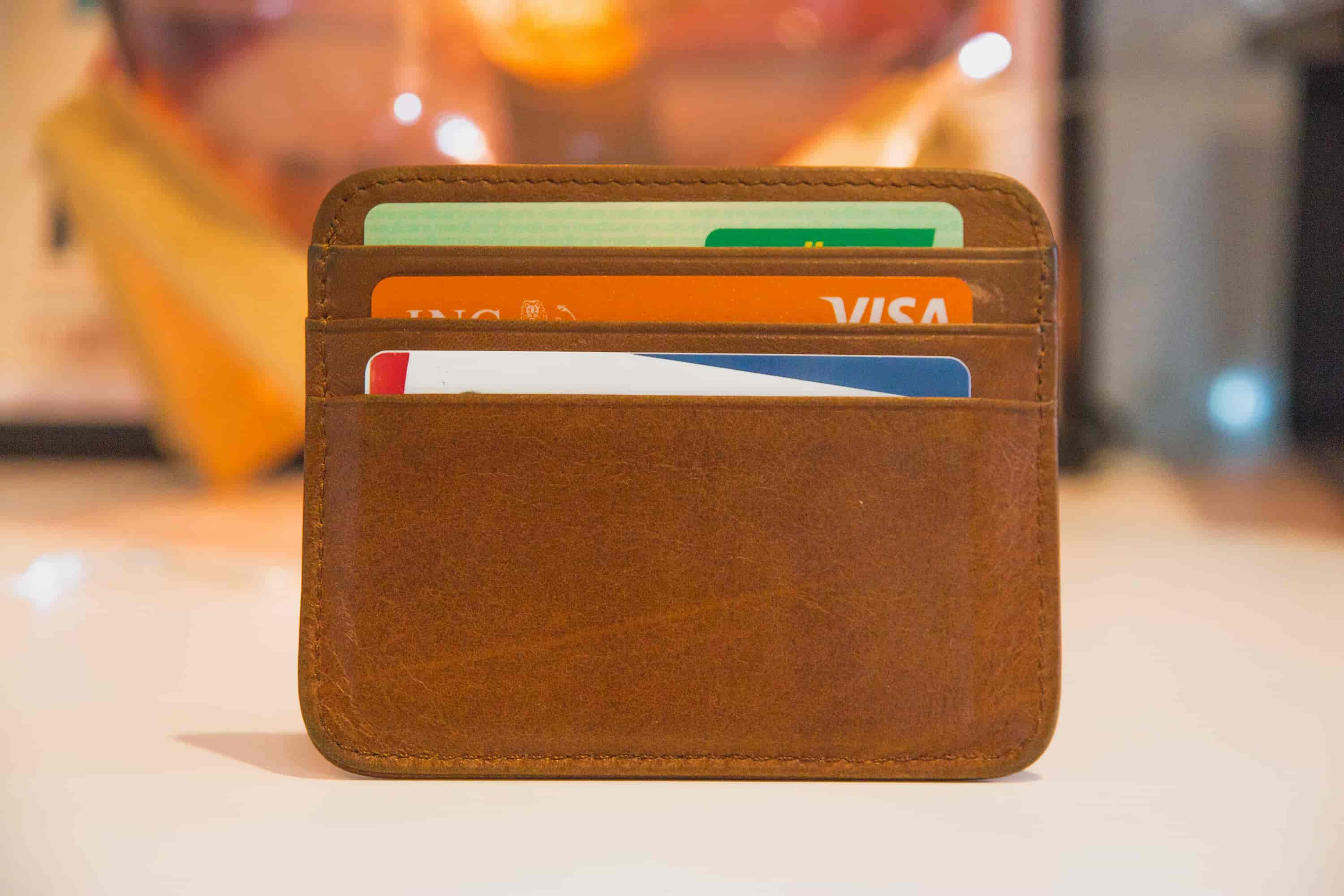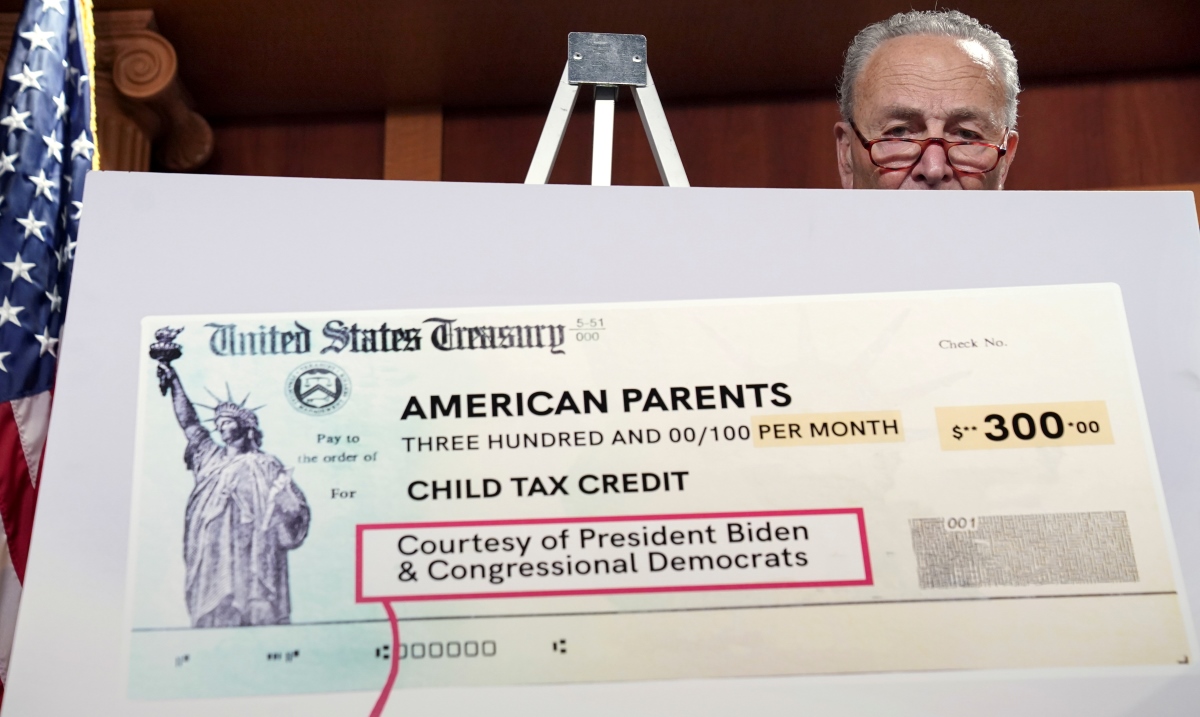

Finance
How Can I Build My Child’s Credit Score
Published: October 21, 2023
Learn how to build your child's credit score and set them up for financial success with expert tips and advice in the field of finance.
(Many of the links in this article redirect to a specific reviewed product. Your purchase of these products through affiliate links helps to generate commission for LiveWell, at no extra cost. Learn more)
Table of Contents
Introduction
Building a solid credit score is an essential part of financial well-being in today’s world. It opens doors to various opportunities, such as securing loans, getting better interest rates, and even renting an apartment. While credit scores are typically associated with adults, starting early can give your child a head start in establishing a strong credit history.
But how can you build your child’s credit score? It may seem like a daunting task, but with the right approach and guidance, it can be done. This article will explore the various methods and strategies to help your child start building credit from a young age, setting them up for financial success in the future.
Before diving into the specific steps, let’s first understand what credit scores are and why they matter. Credit scores are numerical representations of an individual’s creditworthiness. Lenders and financial institutions use these scores to assess the risk involved in extending credit. A higher credit score indicates a lower risk borrower, making it easier to obtain loans and favorable terms.
Credit scores are calculated based on several factors, including payment history, credit utilization, length of credit history, types of credit, and new credit inquiries. By proactively building a positive credit history for your child, you can help them establish a solid foundation for their financial future.
Now that we’ve established the importance of credit scores and their impact on financial opportunities, let’s explore the different factors that can affect a credit score and how to address them when building credit for children. By understanding the key factors, you can make informed decisions and take the right actions to set your child up for success.
Understanding Credit Scores and Why They Matter
Credit scores are numerical representations of a person’s creditworthiness, and they play a crucial role in various financial transactions. Lenders, landlords, and even employers may use credit scores to assess an individual’s financial responsibility and trustworthiness.
There are several credit scoring models, with the most common being the FICO Score and VantageScore. These scores range from 300 to 850, with higher scores indicating better creditworthiness. A good credit score can lead to lower interest rates on loans, higher credit limits, and more favorable terms.
Why do credit scores matter? Here are a few reasons:
- Access to Loans: When your child becomes an adult and needs to finance significant purchases like a car or a home, lenders will assess their creditworthiness based on their credit score. A good credit score can make it easier to secure a loan with favorable terms.
- Lower Interest Rates: A higher credit score can result in lower interest rates on loans. This means your child will pay less in interest over time, saving them money in the long run.
- Housing Opportunities: Landlords often check credit scores as part of the rental application process. A good credit score can increase your child’s chances of getting approved for a rental property.
- Employment Prospects: Certain employers may perform credit checks as part of their hiring process, especially for positions involving financial responsibilities. A strong credit score can help your child stand out in the job market.
By understanding the significance of credit scores, you can begin to see the value in building a strong credit history for your child from an early age. Taking the right steps now can set them up for financial success in the future.
Factors That Affect Credit Scores
Several factors influence credit scores, and understanding these factors is crucial when building credit for your child. Let’s explore the key components that contribute to credit scores:
- Payment History: The payment history is one of the most important factors. Consistently making on-time payments demonstrates financial responsibility and positively impacts the credit score. Late payments, on the other hand, can significantly lower the score.
- Credit Utilization: Credit utilization refers to the percentage of available credit that your child is currently using. Keeping this ratio low, ideally below 30%, demonstrates responsible credit utilization and positively impacts the credit score.
- Length of Credit History: The length of credit history is the amount of time your child has had credit accounts. Having a longer credit history shows stability and responsible use of credit, which can positively impact the credit score.
- Types of Credit: Having a diverse mix of credit accounts, such as credit cards, loans, and lines of credit, can demonstrate that your child can manage different types of credit. This factor is not as influential as others but still contributes to the credit score.
- New Credit Inquiries: Whenever your child applies for new credit, it results in a hard inquiry on their credit report. Multiple inquiries within a short period can negatively impact the credit score, as it may indicate a higher risk of financial instability.
It’s essential to keep these factors in mind when building credit for your child. By focusing on maintaining a solid payment history, managing credit utilization, and encouraging responsible credit behaviors, you can help your child establish a strong credit foundation.
In the next sections, we will explore different strategies and methods to build credit for children, taking into account these factors and leveraging them to their advantage.
Building Credit for Children
Building credit for children may seem like a challenging task, considering that they typically don’t have a credit history or income of their own. However, there are several strategies and methods available to help them establish credit from a young age. Let’s explore some of these approaches:
1. Opening a Joint Credit Card Account: One option is to open a joint credit card account with your child. This allows them to have a credit card under their name while having you as a co-signer. By using the credit card responsibly and making timely payments, your child can begin building their credit history.
2. Authorized User Status: Another method is to add your child as an authorized user on one of your credit card accounts. Make sure the credit card issuer reports authorized user activity to the credit bureaus. This allows their credit history to start building based on your account’s positive payment history.
3. Credit Builder Loans for Children: Some financial institutions offer credit builder loans specifically designed for children and young adults. These loans allow your child to build credit by making small monthly payments over a set period. It helps them establish a positive payment history while gradually building credit.
4. Monitor Credit Activity: Regularly monitor your child’s credit activity to ensure there are no errors or fraudulent accounts in their name. By addressing any issues promptly, you can protect their credit score and identity.
5. Teach Responsible Credit Card Use: Educate your child about responsible credit card usage, emphasizing the importance of making payments on time, keeping credit card balances low, and avoiding unnecessary debt. Instilling good financial habits early on will set them up for success in managing their credit.
Remember, patience is key when building credit for children. It takes time to establish a solid credit history. Encourage your child to be mindful of their financial decisions, use credit responsibly, and make timely payments to gradually build their creditworthiness.
By utilizing these strategies and methods, you can empower your child to have a healthy credit profile and navigate the world of personal finance with confidence.
Opening a Joint Credit Card Account
One effective method for building credit for children is by opening a joint credit card account. This approach provides an opportunity for your child to start establishing their credit history while having you as a co-signer. Here’s how it works:
When you open a joint credit card account, both you and your child will be primary account holders. This means that your child’s name will be associated with the account and will be reported to the credit bureaus. By using the credit card responsibly and making timely payments, your child can begin building their credit history.
Here are some key points to consider when opening a joint credit card account:
- Select the Right Credit Card: Look for a credit card with favorable terms and low fees. Consider options that offer cash back rewards or other benefits that align with your child’s spending habits.
- Set Credit Limit: Discuss and agree on a reasonable credit limit for the joint account. It’s important to set a limit that your child can manage responsibly without accumulating unnecessary debt.
- Establish Credit Card Guidelines: Set clear guidelines with your child regarding the responsible use of the credit card. Emphasize the importance of making payments on time, keeping credit utilization low, and avoiding unnecessary debt.
- Monitor Activity: Regularly monitor the credit card activity to ensure that your child is using the card responsibly and making timely payments. This will help you address any issues or mistakes promptly and guide your child towards building a strong credit history.
- Teach Financial Responsibility: Opening a joint credit card account provides an excellent opportunity to teach your child about financial responsibility. Encourage them to track their expenses, create a budget, and make responsible purchasing decisions.
It’s important to note that as a co-signer, you will assume joint responsibility for the credit card account. This means that any missed payments or negative activity on the account can also affect your credit score. Therefore, it’s crucial to make sure that both you and your child are committed to using the credit card responsibly.
By opening a joint credit card account, you can help your child start building their credit history in a controlled and supervised manner. This early exposure to credit will provide them with valuable experience and set them up for future success in managing their own finances.
Authorized User Status
Another effective method for building credit for children is by adding them as authorized users on one of your credit card accounts. This strategy allows your child to piggyback off your positive credit history, helping them establish their own credit profile. Here’s how it works:
When you add your child as an authorized user, they will receive a credit card linked to your account. The credit card issuer will typically report the authorized user’s activity to the credit bureaus, allowing them to build a credit history based on your account’s positive payment history.
Here are some key points to consider when adding your child as an authorized user:
- Select the Right Credit Card: Choose a credit card that has a good payment history and is in good standing. The credit card issuer should report authorized user activity to the credit bureaus for it to positively impact your child’s credit score.
- Establish Clear Guidelines: Have a conversation with your child about responsible credit card usage. Set clear guidelines on how the credit card should be used, emphasizing the importance of making payments on time and using the card responsibly.
- Monitor Activity: Regularly monitor the credit card activity to ensure your child is using the card responsibly and making timely payments. This will allow you to address any issues or mistakes promptly and guide your child towards responsible credit behavior.
- Maintain Good Credit Habits: As the primary account holder, it’s crucial that you continue to use the credit card responsibly and make timely payments. This will ensure that your child benefits from the positive credit history associated with the account.
- Communicate and Educate: Use this opportunity to communicate with your child about the importance of credit, credit scores, and responsible credit card use. Educate them about credit utilization, interest rates, and the long-term implications of building good credit.
It’s important to note that as the primary account holder, you have full control over the credit card account. You can set spending limits, monitor activity, and remove your child as an authorized user at any time if necessary.
Adding your child as an authorized user can give them a head start in building their credit profile. It allows them to benefit from your positive credit history while learning about responsible credit card usage. With time, your child can establish their own creditworthiness, setting them up for future financial success.
Credit Builder Loans for Children
Credit builder loans are another effective method for building credit for children and young adults. These loans are specifically designed to help individuals establish or improve their credit scores. Here’s how they work:
A credit builder loan is a type of installment loan where your child borrows a small amount of money and makes monthly payments over a set period. The loan amount is typically held in a separate account, and your child makes payments until the loan is paid off. Unlike traditional loans, credit builder loans do not require a strong credit history or a high credit score to qualify.
Here are some key points to consider when opting for credit builder loans for children:
- Select a Reputable Lender: Choose a reputable lender that specializes in credit builder loans. Research and compare different options to find one that offers favorable interest rates and loan terms.
- Set an Affordable Loan Amount: Determine a loan amount that your child can comfortably manage. Keep in mind that the primary goal is to build credit, not to borrow a large sum of money.
- Make Timely Payments: Emphasize the importance of making timely payments on the credit builder loan. Consistent on-time payments will demonstrate responsible financial behavior and positively impact your child’s credit history.
- Monitor Loan Activity: Regularly review the loan activity with your child. This allows you to track progress, ensure payments are being made, and address any issues that may arise.
- Build a Relationship with the Lender: Encourage your child to establish a positive relationship with the lender. This may involve engaging in open communication, asking questions, and seeking guidance. A strong relationship with the lender may lead to future credit opportunities for your child.
- Explore Secured Credit Cards: Once your child has successfully completed a credit builder loan, they may consider applying for a secured credit card. Secured credit cards require a security deposit, which acts as collateral against the credit line. Responsible use of a secured credit card can further strengthen your child’s credit profile.
Credit builder loans provide a structured and disciplined approach to building credit for children. Along with making timely payments, your child gains valuable experience in managing installment loans, setting them on the path to financial success.
Remember, the goal with credit builder loans is not to accumulate debt but rather to establish a positive payment history. By instilling good financial habits early on and leveraging credit builder loans, you can help your child build a strong credit foundation for their future financial endeavors.
Monitoring Credit Activity
Monitoring credit activity is a crucial part of building credit for children. By keeping a close eye on their credit, you can ensure that their credit profile remains accurate, protect against identity theft, and address any issues that may arise. Here’s why monitoring credit activity is important and how to go about it:
1. Accuracy of Credit Reports: Regularly checking your child’s credit reports can help identify any errors or inaccuracies. Incorrect information such as an account that doesn’t belong to them or a late payment that was actually made on time can negatively impact their credit score. Monitoring their credit reports allows you to dispute and correct any inaccuracies promptly.
2. Protection Against Identity Theft: Children can be targets of identity theft. Monitoring their credit activity can help detect any signs of unauthorized accounts or suspicious activities that may indicate identity theft. Taking early action against identity theft can prevent long-lasting damage to their credit and financial well-being.
3. Financial Education: Monitoring credit activity provides an opportunity for ongoing financial education. Reviewing credit reports and discussing credit scores with your child can help them understand the factors that impact their creditworthiness. This knowledge will empower them to make informed financial decisions and practice responsible credit habits.
4. Frequent Credit Monitoring Options: There are several ways to monitor credit activity. Consider utilizing credit monitoring services, which provide regular updates on changes to credit reports, credit scores, and potential fraudulent activity. Some services even offer identity theft protection features for added security.
5. Annual Credit Reports: Obtain free annual credit reports for your child from the major credit bureaus – Equifax, Experian, and TransUnion. Review these reports to ensure accuracy and address any issues that may arise. By law, you’re entitled to one free credit report from each bureau every year.
6. Ongoing Credit Monitoring: Consider subscribing to a credit monitoring service that provides continuous monitoring of your child’s credit activity. These services often provide alerts for significant changes to credit reports or suspicious activity. This proactive approach can help identify and address any issues as quickly as possible.
7. Open Communication: Maintain open communication with your child about credit monitoring and the importance of reviewing their credit reports regularly. Encourage them to be proactive in monitoring their own credit activity as they become more independent.
By monitoring your child’s credit activity, you can ensure the accuracy of their credit reports, protect against identity theft, and provide ongoing financial education. This proactive approach will help them establish and maintain a strong credit profile as they navigate their financial journey.
Teaching Responsible Credit Card Use
As you help your child build credit, it is essential to teach them responsible credit card use. Instilling good financial habits early on will set them up for success in managing their credit and overall financial well-being. Here are some tips for teaching responsible credit card use:
1. Educate on Credit Card Basics: Start by explaining the basics of credit cards, interest rates, and credit limits. Help your child understand how credit cards work, emphasizing the importance of using them as a financial tool rather than a means to accumulate debt.
2. Set Spending Limits: Discuss and set spending limits with your child. Help them understand the importance of staying within their means and not overspending. Encourage them to track their expenses and create a budget to ensure they can manage their credit card payments.
3. Emphasize the Importance of Timely Payments: Teach your child the significance of making timely credit card payments. Late payments can negatively impact their credit score and result in additional fees. Help them set up reminders or automatic payments to ensure they never miss a due date.
4. Be Mindful of Credit Utilization: Explain how credit utilization works and its impact on their credit score. Encourage them to keep their credit card balance below 30% of their credit limit. Keeping credit utilization low demonstrates responsible credit management and positively affects their credit score.
5. Discuss Consequences of High Interest Rates: Educate your child about the consequences of carrying a balance and paying high interest rates. Help them understand that paying the minimum amount due each month can result in accumulating significant interest over time. Encourage them to pay their full balance whenever possible to avoid unnecessary debt.
6. Encourage Regular Credit Card Reviews: Teach your child to review their credit card statements regularly for accuracy and to identify any unauthorized charges. This practice will help them stay on top of their expenses and detect any potential fraudulent activity promptly.
7. Lead by Example: Remember that children learn by observing their parents’ behaviors. Set a good example by demonstrating responsible credit card use in your own financial decisions. Show them how you carefully manage your credit cards, make timely payments, and maintain a healthy credit score.
8. Foster Open Communication: Maintain open lines of communication with your child about their credit card use. Encourage them to ask questions, seek guidance, and discuss any concerns or challenges they may encounter. By fostering open communication, you can provide support and help them develop a strong financial foundation.
Teaching responsible credit card use will equip your child with the knowledge and skills necessary to navigate the complex world of credit. By instilling these values early on, you are setting them up for a lifetime of responsible financial decision-making.
Conclusion
Building credit for children is a valuable investment in their financial future. By starting early and teaching them responsible credit habits, you can help set them on the path to financial success. Throughout this article, we have explored various strategies and methods to build credit for children.
Understanding credit scores and their significance laid the foundation for why building credit for children is important. We discussed how factors such as payment history, credit utilization, length of credit history, types of credit, and new credit inquiries affect credit scores.
Opening a joint credit card account or adding your child as an authorized user on your credit card can allow them to start establishing their credit history. Credit builder loans designed for children offer another valuable option for building credit.
Monitoring credit activity is essential to ensure accuracy, protect against identity theft, and provide ongoing financial education. Teaching responsible credit card use empowers your child to make informed financial decisions and develop good credit management habits early on.
Remember, building credit for children is a gradual process that requires patience and guidance. It is essential to communicate openly with your child, encourage responsible financial habits, and educate them about the importance of credit. By doing so, you are equipping them with the knowledge and skills necessary to navigate their financial future with confidence.
Building credit for children is not just about numbers on a credit report. It is about instilling financial responsibility, fostering good money habits, and preparing them for a prosperous financial future. Start early, be patient, and lead by example. Your guidance today will pave the way for their financial success tomorrow.














